
Rarely visited parks offer many surprises
Imagine relaxing sunsets, breathtaking night skies, remote islands and forests isolated from the bustling city hundreds of miles away.
Now imagine that tranquility being disrupted by toxic car fumes, overcrowded campsites, and an overwhelmed volunteer staff.
Out of the 391 national parks, monuments, memorials, historic sites, and preserves, locations like the Great Smoky Mountains National Park and Yellowstone National Park face these issues related to overcrowding daily and can receive up to 41 million visitors a year.
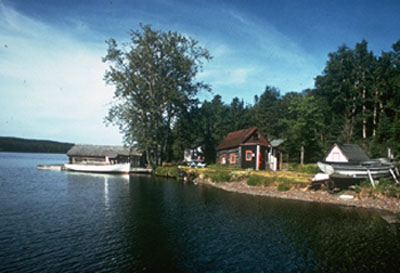 |
Seaplane and ferry are the only way to reach Isle Royale National Park (Photo courtesy of the National Park Service). |
That is not the case for less frequented parks like Big Bend National Park, the only national park in the state of Texas or Isle Royale National Park, a breathtaking island located in the northwest corner of Lake Superior near Michigan.
In fact, Big Bend, at its best, received about 400,000 annual visitors. But recently, it has been drawing a steady stream of about 300,000 visitors a year.
Isle Royale’s rate is even lower. This unit receives about 17,070 visitors a year. That’s almost 3,000 fewer visitors than Yellowstone receives in a month.
While numbers in the thousands aren’t necessarily low, these hidden parks are constantly being compared to those in the top 10 such as Great Smoky Mountain National Park or the Grand Canyon National Park, which both receive millions of visitors a year.
Despite overall visitation rates to national parks on a steady decline over the past 10 years, parks like Big Bend National Park and Isle Royale are used to low visitation rates.
The most obvious reason that these parks are listed at the lower end of the visitation list is primarily due to their remote location. The parks are simply more difficult to reach.
Compared to the Blue Ridge Parkway that spans across almost 500 miles along the crest of the Blue Ridge Mountains through North Carolina and Virginia and has hundreds of thousands of people driving through it daily, it takes six hours to reach Isle Royale National Park most commonly by ferry, if not by seaplane.
Or consider how difficult, in terms of distance and expense, it would be for many Americans to visit the parks in Alaska or Hawaii.
The U.S. is a nation with most of its population residing east of the Mississippi River, but many of America’s least-visited parks are located west of the population and, unfortunately, hundreds, if not thousands, of miles from most residents.
With a 10-hour drive within the vastness of Texas from an urban center such as Dallas and Fort Worth, and a even seven-hour drive from Austin, just reaching Big Bend means time and money. And today, with gasoline prices at $3 a gallon and threatening to reach $4 this summer, the factor of rising gas prices has impact.
These are recognized factors that affect visitation rates, according to an annual visitation report by National Park Service.
“We’re at the end of the road here,” said Lou Good, management assistant at Big Bend National Park. “We’re not on the way to anywhere and that really affects our visitation.”
| Firefighters walk to the fire site in the High Chisos Mountains of Big Bend National Park (Photo courtesy of the National Park Service). | 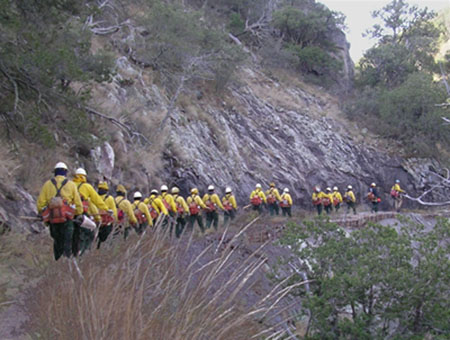 |
Weather is also a factor in affecting visitation for other parks. Alaska, for example, has a limited summer tourism season even not considering vast distances from the West Coast populations of California, Oregon and Washington.
And in the Great Lakes region, visitation periods are also shortened by the colder seasons.
“Lake Superior is a powerful lake,” said Liz Valencia, chief of Interpretation and Cultural Resources at Isle Royale. “People can’t just drive here [Isle Royale].”
Isle Royale can only be reached by seaplane or ferry through Lake Superior, when lake storms aren’t affecting the ferry service.
The same problem exists for other island parks such as those in Hawaii, Florida, Puerto Rico and the Virgin Islands. And those parks also have relatively low attendance figures.
With the relative isolation from urban life and low visitation rates might seem like a drawback, it also allows these parks to thrive in their own way.
Instead of being bombarded with millions of one-time visitors, these remote parks are instead frequented by repeat visitors.
According to a study conducted by Texas A&M University, 62 percent of park visitors to Big Bend National Park are from Texas, reinforcing the fact that many are repeat visitors.
“Return visitors are easier to manage,” said Good. “They’re familiar with what there is to do, making the visiting experience more pleasant.”
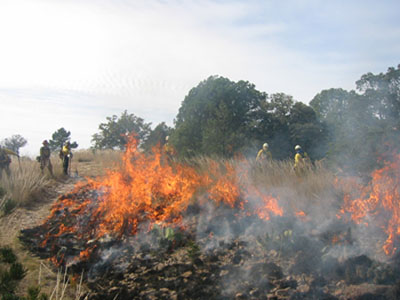 |
The Diablos during a prescribed burn in the High Chisos Mountains of Big Bend National Park in 2005 (Photo courtesy of the National Park Service). |
With visitors being easier to manage, and staff not being bombarded by astronomically high tourist season attendance, the natural areas of these less frequented parks do not suffer as much as other national parks
Location isn’t simply the factor-affecting visitation to these under-the-radar parks.
With the aftermath of the Sept. 11 the visitor attendance and the tourism industry at national parks, especially Big Bend have been affected.
After the 2002 U.S. Customs and Border Protection decision to close the open border line in Big Bend National Park along the Rio Grande, it has taken away one of the great pleasures of visiting Big Bend.
Tourists used to cross the border by simply putting their hand up and waving down a boat across the Rio Grande. Arts and craft items were purchased in the bordering villages.
Locals from the village of Boquilla, Mexico, depended on the tourism coming from the park visitors and it was perfectly legal to visit the village along the Rio Grande border.
Apart from changing the visitor experience, the closing also had a dramatic impact on the villages.
“The tourism was an infusion of cash for the villages,” said Good.
Despite the drastic change for the border community of Boquilla, Big Bend continues to have elements of their culture still present in the park.
| The rocky shores of Isle Royale National Park at Lake Superior (Photo courtesy of the National Park Service). | 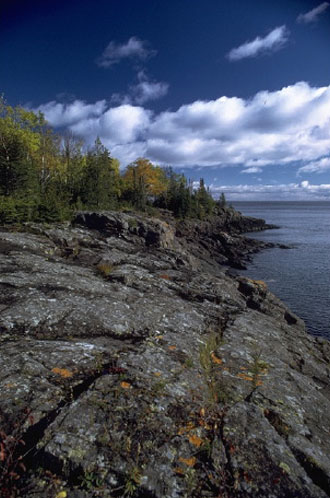 |
One of Big Bend’s unique features is the fire management crew known as The Diablos,. a crew of Mexican nationals used to assist in wild fires in the Big Bend.
“They work in very hot and unpleasant conditions and have an excellent reputation,” said Good.
High visitor statistics doesn’t seem like much of a concern because these parks have other characteristics to offer visitors.
Facts and figures are no longer used to guide visitors through the parks. Instead, a method of universal concepts to have visitors personally relate to the history of the park is employed.
“As a national park, we are always growing and trying to improve our programs,” Kathy Kupper, a spokesperson for the National Park Service in Washington, stated.
Despite being at the lower end of the list, these parks still offer beautiful landscapes, eager and well-trained personnel, and outstanding programs.
At these under-the-radar parks, visitors tend to spend more time exploring the backcountry, taking more advantage of what the parks have to offer rather than half a day’s drive.
Isle Royale visitors average 4.1 days per visit, which is one of the highest in the National Park Service system.
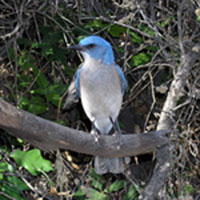 |
Sometimes referred to as “three parks in one,” Big Bend contains a wide variety of scenery. It is a birder’s paradise offering exciting discoveries at all times of the year (Photo courtesy of the National Park Service) |
According to the National Park Service website, although the yearly number of visitors to Isle Royale is less than Yellowstone receives in a few days, the Island’s per acre backcountry use is the highest of all national parks in the United States.
Because of Isle Royale pure natural isolation, it was chosen as a Biosphere Reserve on Feb. 17, 1981, and is a hub where research is encouraged.
Big Bend boasts more types of birds, bats and cacti than any other national park in the United States.
“If you care about it, you’ll care for it,” said Kupper.
So now imagine a sandy beach, glistening lakes, lush forests, rolling rivers and waking up to bird chirps in the morning, miles away from the bustling city life and no one interrupting it.
Sometimes less is more.
RARELY VISITED NATIONAL PARK SERVICE UNITS
| Ten Least-Visited National Park Units |
Number of Visitors During Calendar 2006 |
| 1. Kobuk Valley (Alaska) | 3,005 |
| 2. Isle Royale (Michigan) | 17,070 |
| 3. North Cascades (Washington) | 19,167 |
| 4. Dry Tortugas (Florida) | 64,122 |
| 5. Great Basin (Nevada) | 78,524 |
| 6. Congaree (South Carolina) | 134,045 |
| 7. Guadalupe Mountains (Texas) | 174,157 |
| 8. Voyageurs (Minnesota) | 231,875 |
| 9. Kenai Fjords (Alaska) | 251,630 |
| 10. Big Bend (Texas) | 298,717 |

Comments are Closed